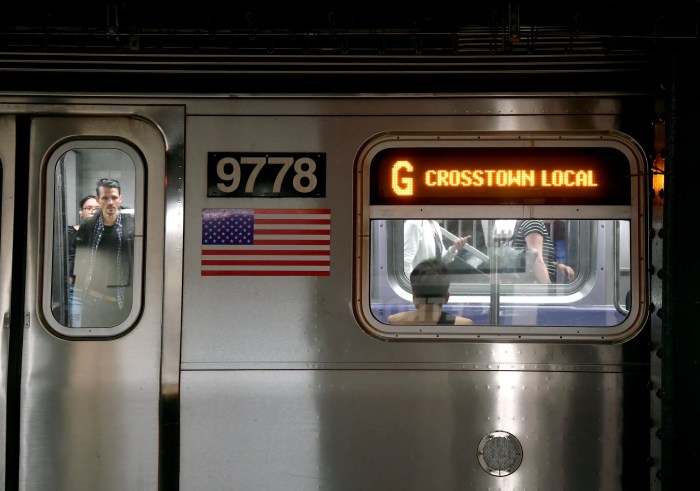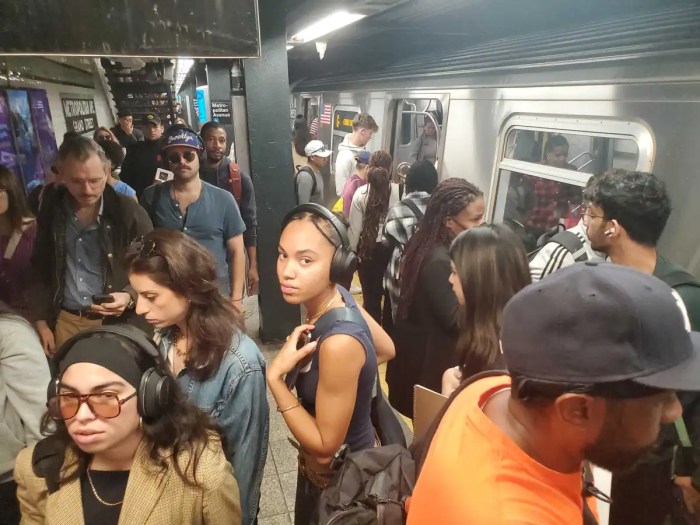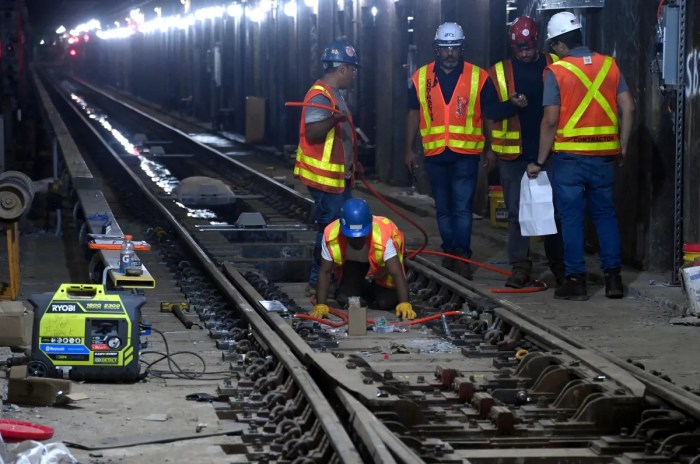The G train is finally back to full service following a painful summer shutdown.
The Crosstown Line returned to its full route between Court Square in Long Island City, Queens and Church Avenue in Kensington, Brooklyn at 5 a.m. on Sept. 3. The line had been shuttered in phases since late June so the MTA could perform major capital work to modernize the route’s signal system, replacing a nearly 100-year-old analog system with modern Communication-Based Train Control, allowing trains to run faster and closer together.
Since June, the G has been outfitted with 100 miles of new cable, while 17 switches and six relay rooms were replaced, MTA construction chief Jamie Torres-Springer said on Tuesday. Ten stations were also deep-cleaned while service was shuttered.

The full $368 million project won’t be completed until 2027, but further work will not require any more 24/7 shutdowns, and by the time it’s finished the MTA expects reliability on the G to rocket upwards.
The G is the only direct train connection between Brooklyn and Queens that doesn’t bypass through Manhattan, and in some parts of its route it’s the only train line available, especially in Greenpoint.
The MTA provided free shuttle bus service along the closed G corridor, which riders reviewed as decent for what it was, but still a significant inconvenience.
“I did them once or twice, and they actually were pretty okay,” said Bushwick resident Addison Boucher, who noted she traveled much less frequently during the shutdown, especially to Greenpoint. “They were air-conditioned. I couldn’t complain, they came quickly. It was fine, but, I mean, it’s still annoying to have to take the bus and go through city traffic instead of the subway.”

Others, however, sought to avoid the shuttle bus entirely. Ben Grube, who works in Gowanus, said he started taking the L to Manhattan and transferring to the F this summer, adding about 20 extra minutes to his daily commute.
“I luckily didn’t have to do it for that long,” said Grube as he waited for a Church Avenue-bound train at Metropolitan Avenue. “But I was happy to see that the G was running today and back in service, because it’ll carve like 20 minutes off my commute.”
Others, like local City Council Member Lincoln Restler, opted to make their trip on two wheels.
“I have biked through extreme heat waves, up and down from Greenpoint to Downtown Brooklyn, many dozens if not hundreds of times this summer to get around our district,” said Restler, who represents much of the G corridor in North Brooklyn. “It was not fun, I would have rather been on an air-conditioned train, but it’s what needed to get done.”
Restler and state Sen. Kristen Gonzalez had mostly positive things to say about the MTA’s handling of the shutdown — particularly regarding shuttle bus service and communication with riders. They expressed dismay, however, that the city had not constructed a dedicated lane so shuttle buses could move faster.
CBTC is a computer-based signaling tech that allows trains to be run closer together than the Great Depression-era analog signals used in much of the system. That means trains arrive faster and more can be run, providing more reliable service. Being nearly 100 years old, analog signals also break down frequently and are one of the primary drivers of subway delays and poor reliability.
The L and 7 lines are the only two routes in the system already fully equipped with CBTC, which has caused reliability to jump on both lines, something riders have noticed.
Jennyfer Ogarro, who works in Long Island City and lives in Williamsburg, said the L has improved noticeably in the 30 years she’s lived in the area; she takes the L and the G on her morning commute.
“I’ve lived around here for 30-odd years, and when I started living around here, the L train was really horrible. It has gotten a lot better,” said Ogarro. “So I’m just trusting that [the G] will get a lot better as time goes on. It’s a work in process.”

Besides the G, the MTA has CBTC projects underway on the Queens Boulevard Line serving the E/F/M/R, the Culver Line serving the F in Brooklyn, and the 8th Avenue Line serving the A/C/E in Manhattan.
